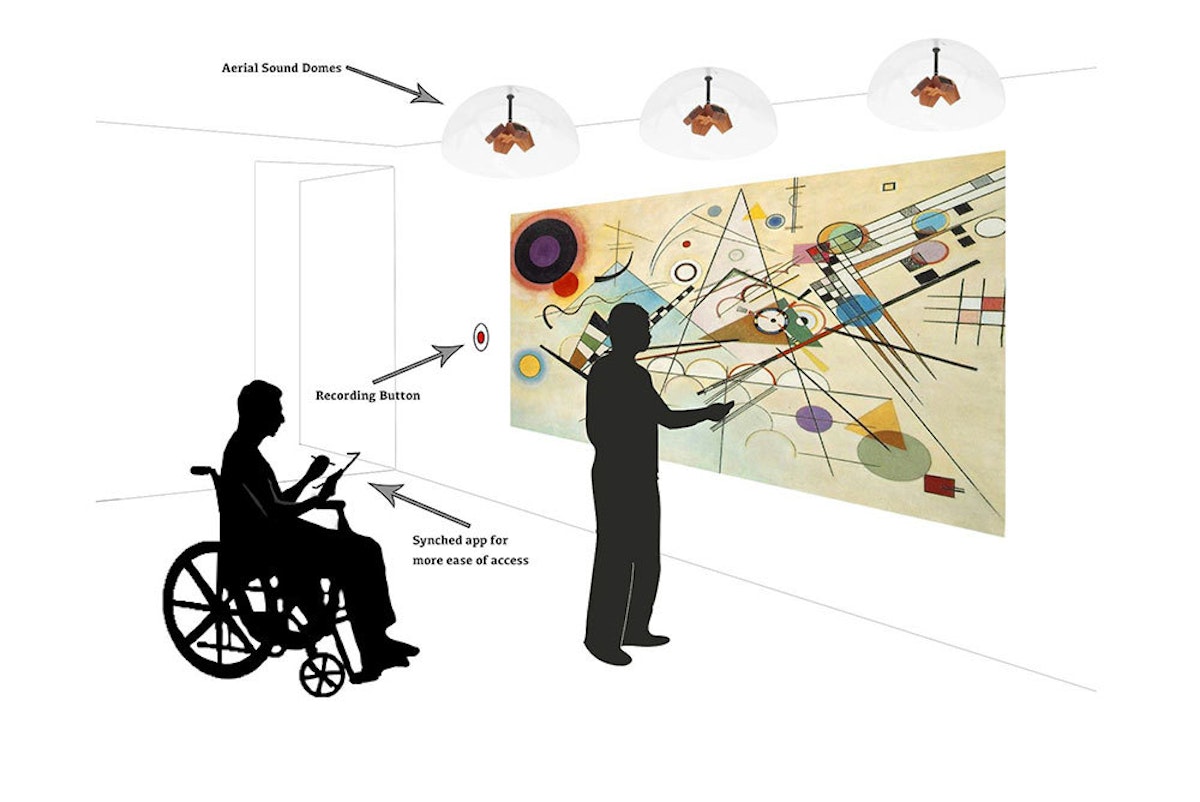Anne Mondro: Artist & Designer as Citizen
On a rainy Tuesday evening in February, a group of nineteen undergraduate Stamps students gather at the University of Michigan Hospital to tackle a human-centered design challenge: transforming an ordinary room into a comforting, peaceful Patient and Family Resource Center. This team of students led by Anne Mondro, associate professor at the Stamps School of Art & Design, is comprised of future artists, designers, and educators committed to making a difference in the community.
Mondro has a passion for community-engaged design. She joined the Stamps School faculty in 2003, and has partnered with U-M Geriatrics since 2005. In 2014 she piloted Memory, Aging and Expressive Arts. In this class, Stamps students work directly with persons living with Alzheimer's or other forms of dementia to develop art projects designed to improve social interaction and quality of life. Family caregivers have assisted in the evolution of the art projects, strengthening the Alzheimer and dementia community in profound, often incredibly moving ways. In the Winter 2016 semester, Mondro debuted Artist and Designer as Citizen, a course in which students learn the history, theory, and practical skills to develop socially engaged art and design projects. Focusing on the topic of health and wellbeing, the course integrated a human-centered design proposal to help people through difficult experiences. Currently, the Patient and Family Resource Center at the U-M Hospital is a standard, sterile waiting room, but Mondro's students aim to transform the room into a peaceful space where patients and their loved ones can go to escape the oftentimes taxing energy of the hospital. Creative activities will also be available in the space, helping minds heal alongside bodies.
The concept for the Patient and Family Resource Center is modeled after the Jones Family Center in Mott's Children's Hospital. In the children's wing, much attention is given to keeping patients' spirits high, but the adult wing is lacking a space that supports the emotional and mental aspects of the healing process. “Adult patients and their families' emotional wellbeing is often overlooked,” Mondro said. "Creativity can benefit adults during times of illness, just as it does children.”
Molly Dwyer-White, manager of adult services for the Patient and Family Centered Care program at UMHS, couldn't agree more. She collaborated with Mondro to design the Artist and Designer as Citizen course, believing that one of the best ways to improve the adult patient and family experience is through improving the space of the hospital itself. “We want to challenge the status quo of how hospitals think of patient space,” she said. “The space provides the front door to begin the conversation about what patients really need.” Dwyer-White is hopeful that by connecting Stamps students directly with patients, the resulting designs will be as personalized to the patients' needs as possible.
When designing the course, Dwyer-White sent a survey to over 800 former and current patients asking them what they would like to see in a family center. The most common answer: “no beige.” Beyond color, they asked for meditation and prayer corners, quiet areas for conversation, large, comfortable chairs, and privacy for phone calls. An overwhelming number simply wanted a place where they could find information about hospital and community resources and raise a health concern or question. Overall, patients desired somewhere private to reconnect with family, away from the constant medical attention of their rooms.
Patients also came into Mondro's classroom to express in-person their hopes and visions for the family center. It is a goal of the course that, by introducing student designers directly to users, the outcome will be personal, imaginative - a true custom fit. Sarah Jane Post (BFA '16) said that after meeting the patients and seeing how excited they were about the prospect of this space becoming a reality, she began to see the project as more than just a school assignment and realized its actual potential for change. “It got me thinking about how my work will actually be supporting a community, and made me want to find something I'm really passionate about,” she said. Many students said they were motivated by the possibility of their work actually being integrated into the final design of the room.
The students presented their proposals in front of a panel consisting of Dwyer-White and Anne Mondro, joined by Aalap Doshi, a human-centered designer for UMHS and community activist, as well as a hospital patient. Overall, the proposals were inventive, elaborating on what the patients requested. Highlights included a planetarium dome with LED constellations, a wall-sized magnet doodle, a fireplace with shadow puppets, a self-sustaining fish tank, and a station for DYI crafts that enable families to pay-it-forward by creating gifts for patients throughout the hospital.

The Patient and Family Resource Center will be a long-awaited addition to the adult wing. When talking about the need for such a resource, Dwyer-White told the story of a man whose wife was in the hospital with terminal cancer. Whenever he would bring their son to visit her, he would stop first at the resource center in Mott's and just play for a while. It gave them both a positive memory of the day as well as something to look forward to with every visit. Thanks to this robust collaboration between patient, hospital administration, and Stamps students, the hospital is well positioned to turn vision into reality. A comprehensive build-out of a new and improved Patient and Family Resource Center is schedule for late 2016.
Story by Clare Brennan.
Title image: Aerial view of University of Michigan Health System, Ann Arbor, MI.